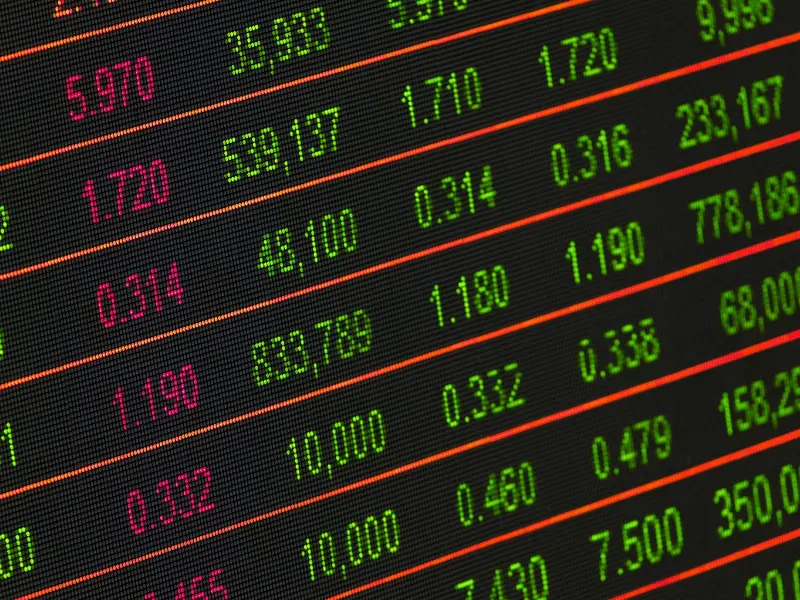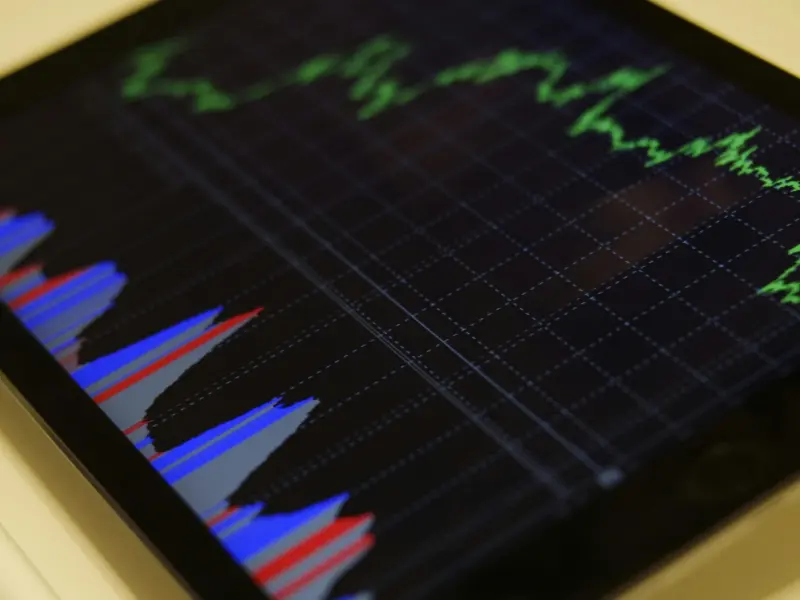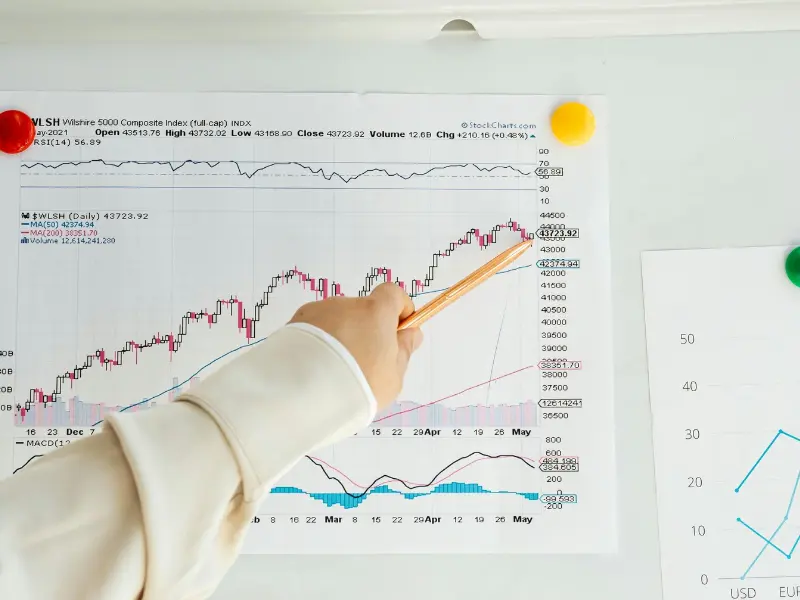Japan’s stock market is known as one of the most dynamic and stable markets in the world. It began in 1878 with the Tokyo Stock Exchange, during the Meiji era when the country started moving toward industrial and economic growth. At that time, the market was not just a place for trading but also a sign of Japan’s modernization.
After World War II, Japan rebuilt its economy from scratch, and the stock market captured every stage of that recovery. The asset bubble in the 1980s and its later collapse did shake the market, but it also led to stronger rules and better transparency.
Today, as the Nikkei 225 has crossed 45,000 points, it shows how Japan has grown with technology, innovation, and global competition. From the early trading floors of the Meiji era to today’s AI-powered systems, Japan’s market has continued to evolve with modern tools and global practices.
From Feudal Japan to Modern Economy

Before 1878, Japan was a very different world. It was a feudal empire under the Tokugawa Shogunate, where Samurai, landlords, and peasants lived in a strict social order. For almost two centuries, the country remained closed to the outside world. Foreign trade and new ideas were tightly restricted. The economy was mostly based on agriculture, and wealth and status were measured by rice, not money.
The Shogunate had given Japan political stability and military discipline, but it had also stopped modern economic growth. This began to change in 1853 when America’s Commodore Perry arrived with his “Black Ships” at Japan’s ports. His arrival sent a clear message — the world was changing fast, and if Japan didn’t adapt, it could lose its independence.
This moment sparked a period of transformation that led to the Meiji Restoration of 1868. The rule of the Samurai ended, Emperor Meiji took power, and Japan started building its industry and financial system following Western models. Railways, banks, and the idea of a stock exchange all emerged during this time. This wave of change finally led to the creation of the Tokyo Stock Exchange in 1878 — marking the beginning of Japan’s journey toward a modern economy.
1878 – Birth of the Tokyo Stock Exchange (TSE)
In 1878, both the Tokyo Stock Exchange and Osaka Stock Exchange were established. They were part of the Meiji government’s vision to create a modern economy. The leaders wanted Japan to adopt industrial and financial reforms like Western nations, where companies could raise capital through public shareholding.
The first listed companies were mostly from railways, shipping, banking, and textiles — the industries that built Japan’s industrial foundation. These exchanges introduced the idea of organized capital markets in the country, giving private investment and industrial growth a clear direction.
1880s–1890s – Industrialization and Capital Formation
During this period, Japan strengthened its financial infrastructure by establishing the Bank of Japan in 1882, which brought stability and control over currency and credit. The government also began promoting private industries through subsidies and privatized some state-owned factories.
These reforms had a direct impact on the stock exchanges. New shares started getting listed, and manufacturing and mining companies became popular among investors. The main group of new investors included merchants and Samurai families, who began putting their wealth into trading and shares. This helped create a strong foundation for organized capital markets in Japan.
1900–1912 – Russo-Japanese War and Financial Boom
After industrial and capital formation, Japan’s stock market began linking with national and international developments. The Russo-Japanese War of 1904–1905 established Japan as a strong military power in Asia. To fund the war, Japan issued both domestic and foreign bonds.
After the victory, global investors gained confidence in Japan, and the stock market experienced its first significant boom. Stocks of railways, shipbuilding, and armament companies rose rapidly. This period marked Japan’s first major bull phase, showing how organized capital markets combined with strategic national policies can accelerate market growth.
1912–1921 – Taisho Era, World War I, and Market Challenges
After the bull phase before the Russo-Japanese War, Japan under Emperor Taisho started experiencing democracy and modern capitalism for the first time. During World War I (1914–1918), Europe was busy with conflicts, which helped Japan’s industrial sector grow as an export hub. Stock prices rose sharply, marking the second major boom in Japan’s stock market.
However, after 1920, the Global Depression and overproduction in Japan put pressure on the market. In 1920–1921, there was a severe stock crash, many banks failed, and the earlier growth faced a temporary setback. This period showed that Japan’s market had become connected to the world, and international trends directly affected stock prices and financial stability.
1923 – Great Kanto Earthquake: Economic Shock

After the 1920–1921 crash, Japan’s stock market was slowly recovering. But in 1923, the Great Kanto Earthquake destroyed Tokyo and Yokohama. Thousands of people died, and many industries were ruined.
Because of this disaster, the stock market had to be temporarily closed, and several listed companies went bankrupt. During the reconstruction, the government supported the market through financial aid and public infrastructure projects. This helped trading to slowly resume and brought back confidence in the market.
1930s – Military Expansion and Market Manipulation
After the 1923 earthquake, the market slowly recovered. But in the 1930s, Japan faced the effects of the global Great Depression (1929). Exports fell, unemployment rose, and deflation put pressure on the economy.
During this period, the military gained more control over politics. After the 1931 invasion of Manchuria and the 1937 Sino-Japanese War, the government started using the stock market to finance the war. Stock exchanges gradually became state-controlled — share prices were kept artificially stable to maintain confidence in war bonds and defense companies. Private investment slowed, and strict regulations were imposed on trading.
1940–1944 – War Economy and Market Freeze
The 1930s militarization and state-controlled trading had already heavily regulated the market, limiting private investment and free trading. On top of this, during World War II (1939–1945), Japan’s stock market became almost symbolic. In 1943, the government passed the Financial Control Law, which nearly stopped free trading.
The Tokyo Stock Exchange (TSE) and Osaka Stock Exchange (OSE) were officially operating, but market liquidity disappeared — investors could not sell their shares. Companies were directly involved in war production, and the civilian economy was close to collapse. By 1944, Japan’s stock market was practically silent; it existed mostly in name, with very little actual trading. From 1878 to 1944, Japan’s stock market experienced its full cycle: birth, boom, crash, and government control. It began as a free market during the industrial revolution and Meiji reforms, then came under strict government control during the 1930s militarization and World War II. This period laid the foundation for the Nikkei Index after 1950 and the rise of modern Japan’s financial system.
After World War II, Japan entered a period of rebirth. By implementing economic reforms, expanding industry, and boosting global trade, the country, which had been completely destroyed in 1945, became the world’s second-largest economy within a few decades.
Japan Post–World War II (1945–Present): From Ashes to the Nikkei Boom
1945–1952: From Destruction to Rebuilding
After the atomic bombs on Hiroshima and Nagasaki in 1945, Japan surrendered. The country was completely destroyed — industries were ruined, banks collapsed, and the stock market was inactive. Japan was under Allied Occupation led by U.S. General Douglas MacArthur, during which major economic and social reforms were introduced:
- Zaibatsu, the big industrial families like Mitsubishi and Sumitomo, were broken up to make the economy free from monopolies.
- Land reforms redistributed land from large landlords to small farmers.
- In 1949, the Tokyo Stock Exchange reopened and began operating under new rules and regulations.
This period was like a rebirth for the stock market — it now worked under a Western-style, transparent, and regulated system, forming the foundation of modern Japan’s financial structure.
1950s–1960s: Economic Miracle – Period of Rapid Growth
After the 1945–1952 rebuilding phase, Japan started rebuilding its industries. The Korean War (1950–1953)gave Japan an unexpected opportunity: the U.S. used Japan as a supply base, giving industries both demand and investment.
Japan quickly rebuilt its manufacturing power — steel, shipbuilding, and textiles grew, and electronics and automobiles expanded too. Brands like Sony, Honda, Toyota, and Toshiba emerged during this period. The stock market steadily grew, and the Nikkei Index, established in the late 1950s, showed record growth by the 1960s.
This period transformed Japan’s image: from a “war loser” to gradually becoming an “industrial leader”. The long-term impact of post-war reforms on the market and economy became clear.
1970s: Oil Crisis and Economic Adjustment
After the rapid growth of the 1950s–1960s, the 1973 Oil Crisis became a major challenge for Japan, as the country heavily relied on energy imports. Prices rose, inflation increased, and the stock market temporarily fell.
However, Japan handled the situation strategically — it developed energy-efficient technologies and shifted focus to high-value exports like electronics, semiconductors, and automobiles. During this phase, the Nikkei Index showed both stability and maturity. This period became a learning phase for Japan, clearly showing how a crisis could be turned into an opportunity.
1980s: The Bubble Economy – The Biggest Boom
This period is the golden story of Japan’s stock market. Cheap loans, high consumer spending, and real estate speculation fueled rapid economic growth. Banks freely gave credit to companies and investors, and everyone started putting money into stocks and property.
By 1989, the Nikkei 225 (Japan’s main stock index) reached 39,000 points — the highest-performing index in the world at that time. Tokyo started to look like a global financial capital. But this growth was not sustainable — prices were far above reality.
1990s: The Crash and the “Lost Decade”
At the start of the 1990s, the bubble burst. Both the stock market and property collapsed — the Nikkei fell from 39,000 to below 15,000. Banks were filled with bad loans, and the entire economy slowed down. The government cut interest rates and provided stimulus, but consumer and business confidence was broken. The 1990s are called the “Lost Decade” because Japan remained in stagnation for ten years. Investors lost faith in the stock market, and companies stopped expanding.
2000s: Globalization and Tech Shift
Around the 2000s, Japan regained some momentum through technology and export-led growth. Brands like Sony, Panasonic, and Canon became strong in global markets. However, the 2008 Global Financial Crisis hit Japan again. The Nikkei fell back to the 7,000–9,000 range.
Still, Japan maintained strong long-term fundamentals, focusing on research, robotics, and high-quality manufacturing.
2012–2020: Abenomics and New Hope

In 2012, Japan’s Prime Minister Shinzo Abe launched a bold economic plan called Abenomics. Its goal was to revive Japan’s slow economy, which was struggling with stagnant growth and deflation (falling prices). Abenomics was based on three arrows — Monetary Easing, Fiscal Stimulus, and Structural Reforms.
1. Monetary Easing — More Money in the Market
The first step was to increase money in the economy. The Bank of Japan cut interest rates very low, even into negative territory in some cases.
- Low interest encouraged people and companies to borrow and spend rather than just save.
- New factories opened, businesses expanded, and demand increased.
Impact:
- Stock market liquidity increased. The Nikkei, around 9,000 in 2012, rose to 24,000+ by 2019.
- The Japanese yen weakened, making exports like Toyota, Sony, and Honda cheaper and more competitive globally.
Japan made money “cheap” so people would use it — like a big sale in a market that encourages spending.
2. Fiscal Stimulus — Government Spending
The second arrow was increasing government spending.
- The government invested in infrastructure, like new bridges, roads, and disaster relief projects.
- This created jobs and increased demand in the short term.
Downside:
- Japan already had high public debt, and fiscal stimulus increased it further.
- Still, it was necessary — when people don’t spend, the government must step in to keep the economy alive.
3. Structural Reforms — Modernizing the System
The third and most difficult arrow was long-term structural reforms.
Key reforms included:
- Womenomics — bringing more women into the workforce.
- Relaxing rules for foreign workers, as Japan’s population was aging rapidly.
- Encouraging companies to focus on innovation and productivity.
- Improving corporate governance to restore investor trust.
Impact:
- Female workforce participation increased, and employment became somewhat stable.
- However, cultural and demographic issues, like low birth rate and aging population, limited results.
Outcome of Abenomics:
- Stock market revived — Nikkei went from 9,000 to 24,000.
- Inflation increased, but the 2% target was never fully reached.
- Japan’s economy became more stable, but long-term challenges like an aging population and low consumption remained.
New Capitalism – Prime Minister Fumio Kishida (2021)
After Abenomics, Kishida introduced “New Capitalism”, aiming to make economic growth benefit everyone, not just the rich.
1. Background
- During Abenomics, the focus was on reviving the economy through monetary easing, fiscal spending, and reforms.
- Kishida noticed that while growth happened, the income gap increased, and middle-class and small businesses didn’t benefit enough.
- He said: “We need a capitalism that’s not just for profits, but also for people.”
2. Main Idea – “New Capitalism”
- Balance the market economy with social justice.
- Two pillars:
- Wealth creation (growth): technology, innovation, green energy, startups.
- Wealth distribution (fairness): wage growth, better working conditions, support for families and education.
3. Key Focus Areas
- Increase wages: motivate companies to raise salaries.
- Support startups and innovation: invest in AI, green tech, biotech.
- Education and skills: prepare youth for the future.
- Green Transformation (GX) & Digital Transformation (DX): make Japan sustainable and tech-driven.
- Reduce income gap: empower the middle class to increase spending power.
4. Real-world Goal
- Move from “trickle-down” (rich to poor) to “trickle-up” (growth reaches everyone).
- When ordinary people earn more, overall market growth happens naturally.
5. Challenges
- Critics say the idea is good, but implementation is slow.
- Corporate sector is still cautious about increasing salaries, and reforms haven’t fully scaled yet.
2020–2025: Modern Era – Post-Pandemic Rise

During COVID-19, global markets fell, but Japan showed a comparatively better recovery. Companies in semiconductors, renewable energy, and automation supported the stock market. By 2024–25, the Nikkei reached around 38,000+ points, approaching its 1989 high after almost 35 years.
Japan’s stock market has now completed a full cycle:
destruction → rebirth → miracle → crash → resilience
Conclusion
After World War II, Japan rewrote its entire story. A country once defined by defeat and destruction rebuilt its economy with discipline, innovation, and patience to reach the top of the world. At every stage, the Tokyo Stock Exchange and the Nikkei Index witnessed Japan’s journey — from the economic boom of the 1980s to the “Lost Decade” of the 1990s, and the modern experiments of Abenomics and New Capitalism. Even today, Japan continues to prove that a nation can rise again — stronger, wiser, and more balanced — through reform, technology, and resilience.
This entire journey has been beautifully explained in Princes of the Yen by Richard A. Werner, which offers a deeper look into how Japan’s central banking system, financial policies, and government decisions shaped the country’s rise and transformation over time.